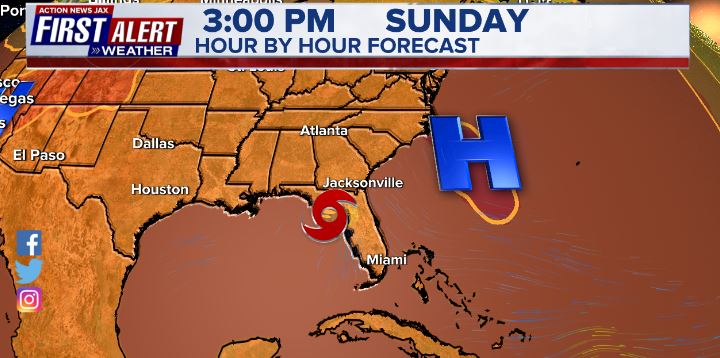Jacksonville, Fl. — The “Buresh Bottom Line”: Always be prepared!.....First Alert Hurricane Survival Guide... City of Jacksonville Preparedness Guide... Georgia Hurricane Guide.
STAY INFORMED: Get the * FREE * First Alert Weather app
FREE NEWS UPDATES, ALERTS: Action News Jax app for Apple | For Android
WATCH “The Ins & Outs of Hurricane Season”
WATCH “Preparing for the Storm”
READ the First Alert Hurricane Center “Survival Guide”
***** ALWAYS CHECK & RE-CHECK THE LATEST FORECAST & UPDATES! *****
Potential local - Jax/NE Fl./SE Ga. impacts from“Fred” BASED ON CURRENT FORECAST.... it appears *at this time* that there will be NO significant direct impacts to the local area from Grace:
* increase in tropical moisture through early next week
* multiple heavy bands of showers & t’storms through Monday lingering into Tue. Rainfall totals through early in the week shoulda average 1-2″, locally 3″+.
* isolated waterspouts & tornadoes
* little if any significant increase in the gradient winds though bands of strong storms/squalls may briefly produce gusts between 30 & 50 mph.
* heightened rip current risk at area beaches - swim or surf with a buddy & as close to a lifeguard as possible
* no storm surge
* CHECK BACK FOR UPDATES!!
FRED:
Right off the top: Fred is now undergoing a metamorphosis of sorts in what is likely the long awaited/anticpated reorganization cycle after its 3-4 entanglement with the land masses of Hispaniola & Cuba. It’s questionable how much & how fast Fred can reorganize & whether or not a true core can be become established. However, satellite imagery indicates the process is underway & there is now plenty of warm water for Fred to work with but is imbedded within 20-30 mph of shear out of the west. The westerly shear will likely cause Fred to become rather heavily weighted on its east side with much of the heavy rain & wind north & east of whatever center eventually evolves.
Overview: The strong tropical wave entered the NE Caribbean Tue. & was upgraded south of Puerto Rico to tropical storm “Fred” Tue. evening - the 6th named storm of the Atlantic season & about 2 1/2 weeks ahead of the avg. date of Aug. 28th. The avg. date for the first hurricane is Aug. 10th but Elsa briefly became a hurricane in early July. Fred weakened to a tropical depression over the mountainous terrain of Hispaniola Wed. evening & has struggled since with more land interaction with Cuba for some 48+ hours. Overall... forecast models have come into decent agreement on the track & speed of Fred trending a bit east again recently centered on a Fl. Panhandle landfall Monday night-early Tue.
Fred has taken it on the chin after tangling with Hispaniola & Cuba. The center may have a tendency to “jump around” following bursts of convection until & unless a core can be become established. Fred has slowed - as expected - as it rounds the western edge of the expansive Bermuda High stretching from the U.S. to the Central Atlantic & has made the turn more northwest followed by turn north up to landfall.
One of the greatest complicating factors has been - & will be - the land interaction combined with fairly persistent shear albeit at varying speeds. By later Mon./Tue. Fred - assuming the storm has reorganized - will be approaching the Gulf Coast. Both the GFS & European have been initializing well & bring the system northward through the Central & Eastern Gulf into the Fl. Panhandle as a tropical storm. Due to some reformation of the center it would seem, recent model trends have shown a bit of a swing back to the east but are tightly clustered. IF Fred can overcome the moderate shear, there is concern for a stronger tropical cyclone than is indicated by models or the current NHC forecast. Anyone on the Gulf Coast from the NW coast of Fl. through the Panhandle & along the Alabama & Mississippi coasts needs to stay up to date on the latest forecasts.
The GFS has had a right/east bias the last couple of weeks with tropical cyclones over the E. Pacific, but the model was a clear “winner” during Elsa 4-5 weeks ago. A stronger ridge seems to be the most logical forecast right now given how stout the ridge has been since essentially May. Clearly, such a steering flow has dominated the last few days. The UKMET model is generally a compromise between the GFS & European & has generally been pretty decent on Fred so far showing the more westward movement before turning north & is still a little west of the GFS & Euro.
Everyone along the Gulf coast should check & re-check the latest trends & forecasts!
Expect heavy rain bands for much of the Florida Peninsula at one time or another into Monday spreading from south to north. Winds will be of little concern for most of the Peninsula saving the Panhandle where sustained winds may reach tropical storm strength if Fred does indeed intensify before landfall. Tropical storm conditions can be anticipated as far west as at least Mobile & Pascagoula.
Stay tuned & stay up to date on the latest forecasts!


Spaghetti plots including ensemble forecasts for Fred:



South Fl. Water Management District:



Plenty of moisture for Fred & Grace to work with:


A half foot or more of rain will accompany Fred causing areas of flooding, especially considering the wet ground due to a wet last 6-7 weeks:
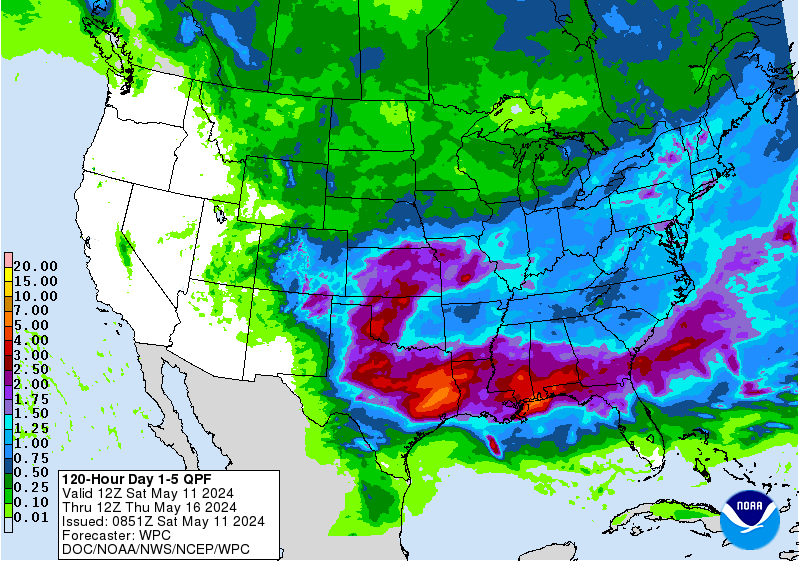

A “zone” of strong shear is gradually shrinking & weakening:
500 mb (~30,000 feet) GFS forecast - the Bermuda High has been & will be critical! It appears the high will break down some & shift a little east/northeast by Sun./Mon. thereby allowing the northward/NW turn by Fred. How strongly the ridge builds back in next week will be key for the movement of “Grace”.
GRACE:
Tropical wave ‘95-L’ became tropical depression #7 Fri. afternoon & was upgraded to tropical storm “Grace” while steadily & quickly moving west/northwest. The five earliest named 7th storms of the season (Klotzbach): 2020 (7/22) 2005 (7/24) 1995 (8/10) 2017 (8/13) 2011 (8/14).
The track appears to be very similar - especially initially - to Fred. As Fred departs by midweek, a high pressure ridge should have a tendency to build underneath which may - ultimately - steer Grace more westward. The GFS model seems to have come to terms with itself after some wild swings regarding track & intensity. The Euro & UKMET have been pretty steady. So - now - the models are converging on a forecast solution that takes Grace over Hispaniola & over or very near Cuba resulting in - as was the case with Fred - a great deal of weakening. Some of the models are showing a decay to an open wave once over land. Time will tell but once again it looks like the Bermuda High will remain firmly entrenched pushing Grace W/NW along a more southern route well south of Jacksonville & probably most of Fl. save perhaps the Keys IF Grace survives its passage over & near the Greater Antilles.
Grace is moving quickly to the west/northwest & is a compact storm so we may very well see some pretty big intensity fluctuations over relatively short periods of time depending on land interaction & any changes in the storm’s overall atmospheric environment. It seems to me - at this point - that a more southern route continues to be the most logical given the strength of the Bermuda High & potentially weaker system once - & if - there is land interaction with the Greater Antilles.
Meanwhile... a series of tropical waves continues to move west off the coast of Africa with multiple “threats” over the next couple of weeks.
And there is a small but pretty well organized low pressure area over the W. Atlantic not too far from Bermuda. Some development of this low is possible while it sinks south & west before turning around back to the northeast later in the week. This low looks to stay east of the U.S.




We’re now less than 4 weeks from the peak of the hurricane season (Sept. 10), so just from a climatological point, we should see an uptick in Atlantic activity. But there are also other indications of a more active period or “burst” with the MJO, seasonally warm sea surface temps. & rather impressive deep oceanic heat content.
Sea surface temps. across the Atlantic are now near to above avg. across much of the basin (2nd image below) & - even more importantly - deep oceanic heat content is becoming impressive & the “equivalent oceanic heat content” - namely depth averaged temperature in the upper 300 m (~984 feet) - is even more impressive all the way from Africa to the Gulf of Mexico. Such an ocean water temp. pattern is conducive to long track deep tropical Atlantic tropical cyclones & can lead to a more favored regime for rapid intensification cycles. From an AMS research paper in ‘08 Mainelli, DeMaria, Shay, Goni: “Results show that for a large sample of Atlantic storms, the OHC variations have a small but positive impact on the intensity forecasts. However, for intense storms, the effect of the OHC is much more significant, suggestive of its importance on rapid intensification. The OHC input improved the average intensity errors of the SHIPS forecasts by up to 5% for all cases from the category 5 storms, and up to 20% for individual storms, with the maximum improvement for the 72–96-h forecasts. The statistical results obtained indicate that the OHC only becomes important when it has values much larger than that required to support a tropical cyclone.” More recent research continues to indicate similar correlations.
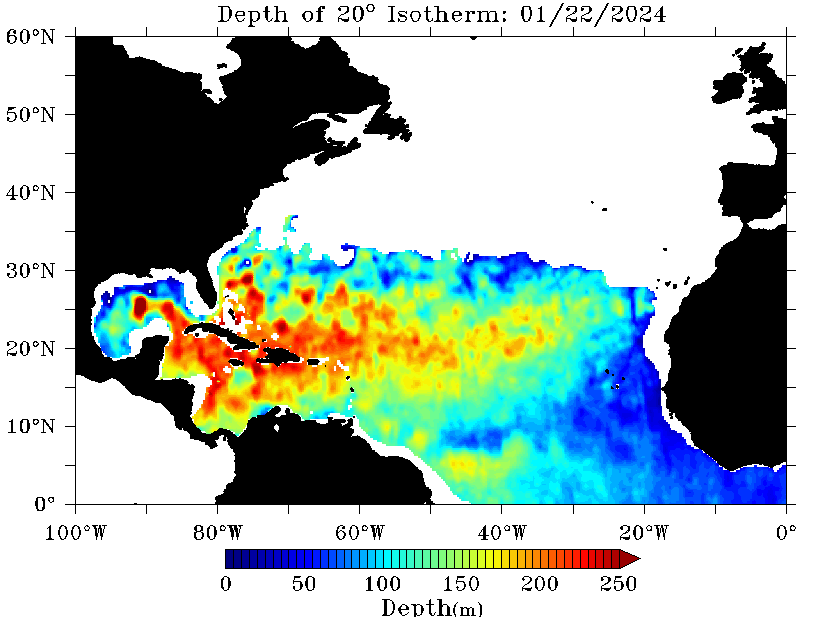
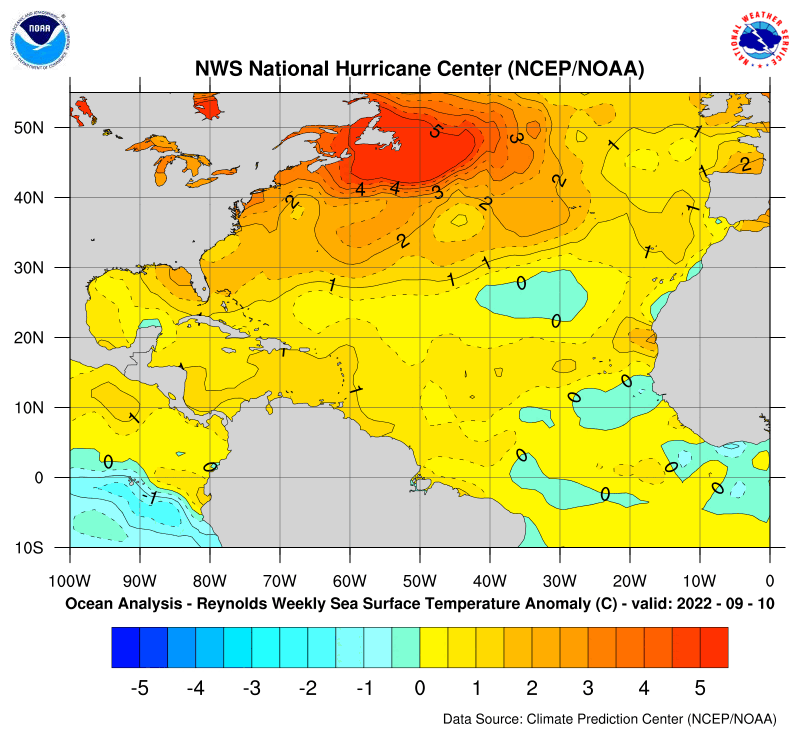


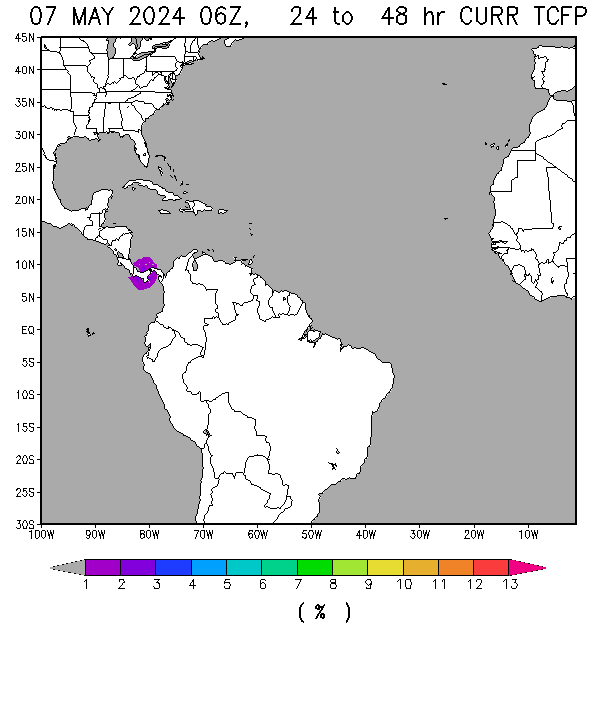
Saharan dust. Dry air - yellow/orange/red/pink. Widespread dust is most common earlier in the hurricane season & is indicative of dry air that can impede the development of tropical cyclones. However, sometimes “wanna’ be” waves will just wait until they get to the other side of the plume then try to develop if everything else happens to be favorable.

2021 names..... “Henri” is the next name on the Atlantic list (names are picked at random by the World Meteorological Organization... repeat every 6 years... historic storms are retired (Florence & Michael in ’18... Dorian in ’19 & Laura, Eta & Iota in ‘20). Last year - 2020 - had a record 30 named storms. The WMO decided beginning in 2021 that the Greek alphabet will be no longer used & instead there will be a supplemental list of names if the first list is exhausted (has only happened twice - 2005 & 2020). More on the history of naming tropical cyclones * here *.





East Atlantic:





Mid & upper level wind shear (enemy of tropical cyclones) analysis (CIMMS). The red lines indicate strong shear:
Water vapor imagery (dark blue indicates dry air):

Deep oceanic heat content continues to increase across the Gulf, Caribbean & deep tropical Atlantic & has become pretty impressive from the Central/NW Caribbean into the Gulf of Mexico:
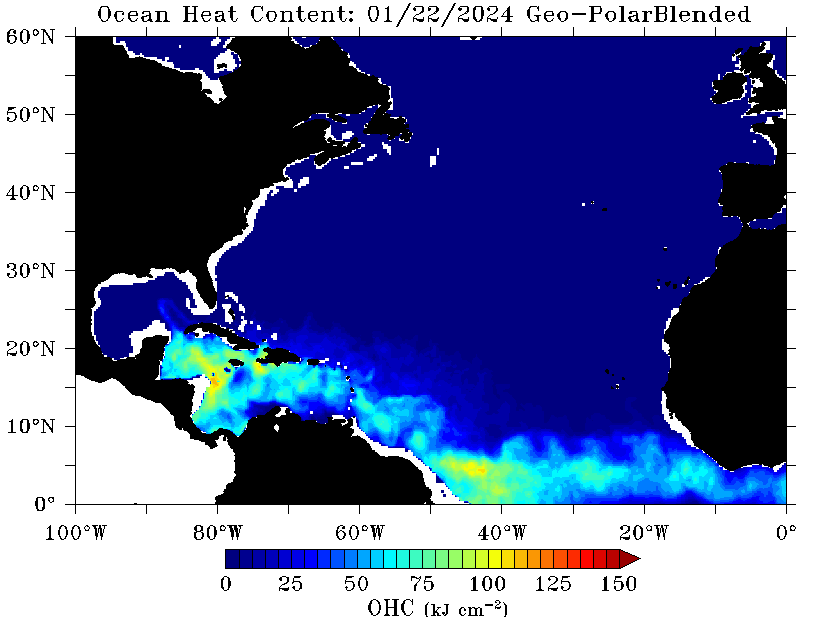
Sea surface temp. anomalies:


SE U.S. surface map:

Surface analysis centered on the tropical Atlantic:

Surface analysis of the Gulf:

Caribbean:

Atlantic Basin wave forecast for 24, 48 & 72 hours respectively:




The East Pacific - Linda:


West Pacific IR satellite:

Global tropical activity:

Cox Media Group

